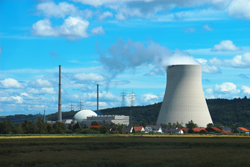Recycling technologies for nuclear waste
As progress in nuclear energy fosters increasing public support of this clean and renewable alternative form of energy, significant attention is now being given to the radioactive waste products of energy generation. One of the most promising technologies for reducing environmental impact involves separating radioactive species and converting them to safer forms. Partitioning and transmutation (P&T) products are less hazardous and some can even be reused in nuclear reactors, thus reducing the volume of waste as well. The EU-funded project 'Actinide recycling by separation and transmutation' (ACSEPT) investigated two means of separation, technically mature aqueous and state-of-the-art dry (pyrochemical) processes. By the end of the project, ACSEPT scientists had carried out hot-test demonstrations of four aqueous P&T processes designed for use with future Generation IV (Gen IV) nuclear energy systems. They were either modified versions of existing processes or ones specifically developed within the scope of ACSEPT. Flow sheets have been made available for all four. In addition, ACSEPT continued work on two pyrochemical processes with a focus on selected key process steps and demonstrated their viability as options for future recycling of radioactive waste. Gen IV technologies, slated to hit the market in 2030, are focused on enhanced safety, minimisation of waste and better use of natural resources. ACSEPT has made an important contribution to these objectives with its technologies and tests, and has also highlighted important future research directions for the nuclear industry.







